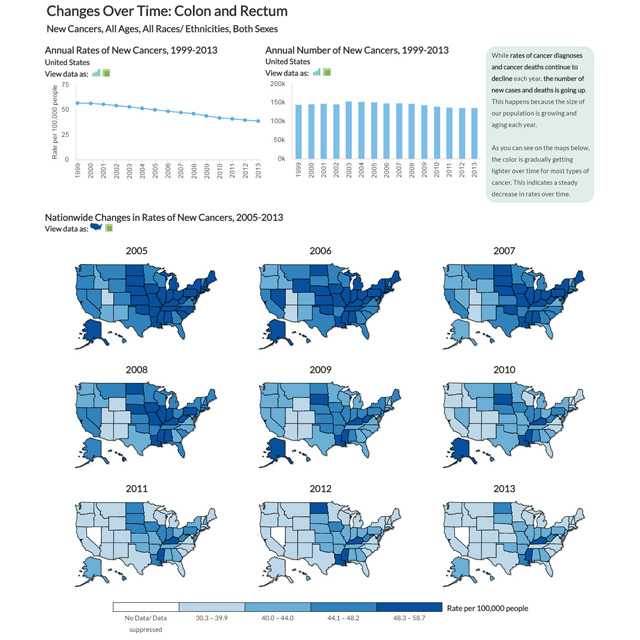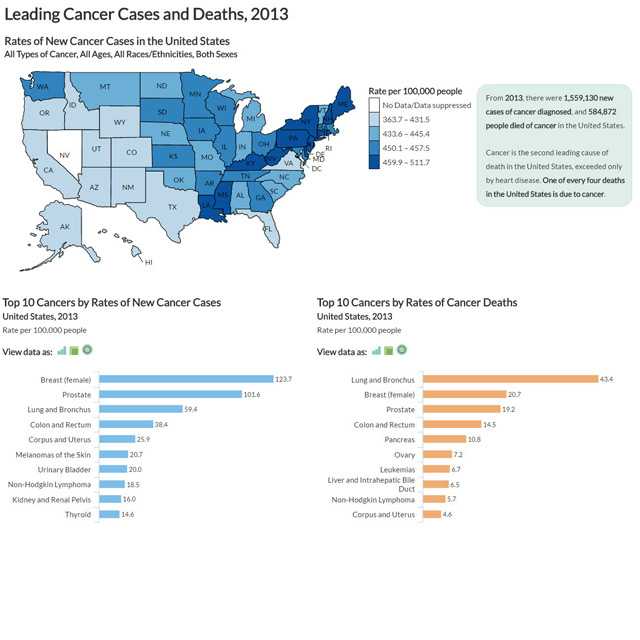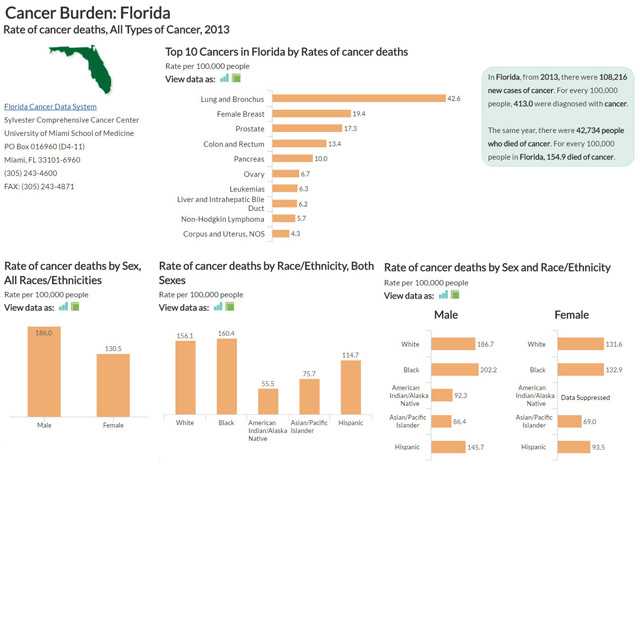U.S. Cancer Statistics Data Visualization Website
New way to see official U.S. Cancer Statistics
CDC releases NEW, interactive U.S. Cancer Statistics data displays that improve the access to and look of the official federal cancer statistics. Compelling graphics and analysis make it easy for anyone to explore and use the latest official federal cancer data by cancer type, state, demographics, and year.
Working together, the Centers for Disease Control and Prevention (CDC) and the National Cancer Institute (NCI) capture information on nearly every cancer diagnosed across the U.S. Each year, this information is updated and available as U.S. Cancer Statistics. The uniqueness of this cancer data is that it is not a sample or estimate – it is high-quality, complete data that comes from hospitals, physicians, and labs across the nation. Cancer counts and rates are essential to measuring progress and targeting action toward this major cause of death among Americans.
The data visualizations make it easy for anyone to access the latest and official U.S. cancer statistics to help cancer control efforts have the greatest impact. Cancer care and prevention professionals, planners, advocates, journalists and policymakers are encouraged to access this new tool to view and report cancer statistics.
Contact Information
Spokespersons
Lisa Richardson, MD, MPH
“The United States Cancer Statistics Data Visualization has something for everyone. It illustrates comprehensive cancer data collected by CDC’s Division of Cancer Prevention and Control and our partners, and can be used for public health action.”
Lisa Richardson, MD, MPH – Director of CDC’s Division of Cancer Prevention and Control
Loria Pollack, MD, MPH
“Our goal for the new data display is for everyone to have quick and easy access to the latest, official US cancer data.”
Loria Pollack, MD, MPH – Medical Officer, National Program of Cancer Registries
Simple Singh, MD, MPH

“The user-friendly tool explains stories behind the numbers and makes U.S. cancer surveillance data more easily accessible to the public and cancer control planners.”
Simple Singh, MD, MPH – Epidemiologist, Cancer Surveillance Branch
Related Links
- United States Cancer Statistics Data Visualizations
- National Program of Cancer Registries (NPCR)
- Surveillance, Epidemiology, and End Results (SEER) Program
- National Vital Statistics System (NVSS) Mortality Data
- United States Cancer Statistics Web-based report
- United States Cancer Statistics Technical notes
- National Program of Cancer Registries Public Use Databases
- CDC Division of Cancer Prevention and Control cancer prevention materials
- CDC Division of Cancer Prevention and Control Comprehensive Cancer Control Plans
- MMWR: Surveillance for Cancer Incidence and Mortality — United States, 2013
- MMWR: Invasive Cancer Incidence and Survival — United States, 2013
- Page last reviewed: April 27, 2017
- Page last updated: May 2, 2017
- Content source:



 ShareCompartir
ShareCompartir




